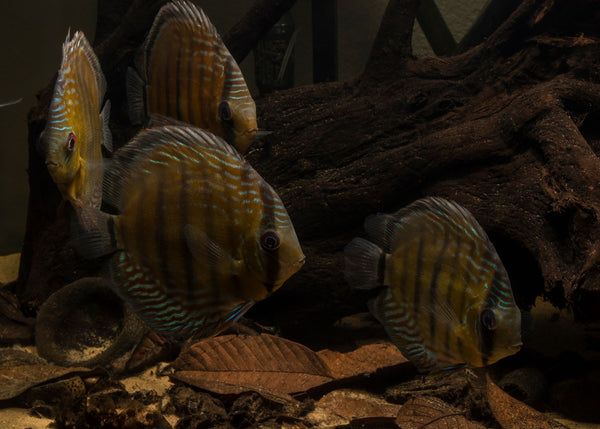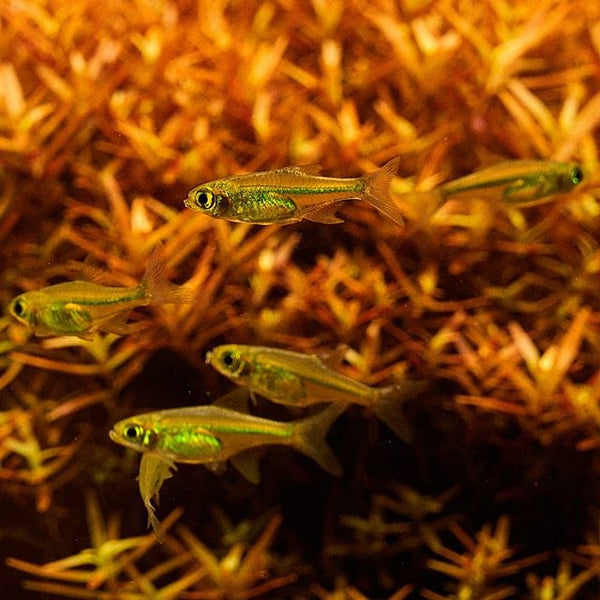- Continue Shopping
- Your Cart is Empty
Catappa Leaves- Nature's "Miracle Cure!" Um, NOT!!!!! Dive Deeper!
I hate exaggerations, the perpetuation of myths, and the attribution of capabilities to techniques, products, etc. in the hobby which are only marginally based in fact. Especially when these ideas are pushed out by people who may not have all of the facts, the personal experience, and/or the background to back it up.
These things become very detrimental to the hobby.
Now look, I realize that many of these things are offered up with good intentions; not with some nefarious purpose in mind. I mean, sure, sometimes you'll see someone who has a vested interest in selling something proffer these kinds of things, which flat-out sucks.
On the other hand, many of these offerings are simply "regurgitations" by well-intended hobbyists who simply didn't bother to do their "due diligence" and research the facts before pushing it out on the web.
Well, that sucks, too. Right?

As a guy who sells leaves for a living, I've had to be careful to not ascribe miraculous attributes to the stuff I sell- because it's not only not helpful- it can be downright misleading and certainly counterproductive for the hobby and industry by doing so!
And I see a lot of counterproductive garbage being put out there at scale. It's important to address some of this stuff from time to time, especially when it's about our use of botanicals in natural-style aquariums. We have an obligation, of sorts, to elevate our practice of utilizing natural materials in aquariums, and that often means diving just a bit deeper when seemingly "too good to be true" assertions are made.
Here is one of my fave misunderstood botanical claims:
Catappa leaves can "cure fish diseases."
This is one which has been perpetuated for years (often by people who sell leaves online and elsewhere -hey, I'm in that group, huh?).
It bothers me.
Although, it actually has some validity to it. I said "some"- because we in the hobby and industry tend to selectively "cherry pick" stuff we like from science and run with that, often overlooking some of the more sobering realities in favor of the "sizzle."
Yup.
Clarification is required.
It has been known for many years by science that botanicals like catappa leaves (and others) have compounds in their tissues which do have some potential medicinal functions, like saponins, phytosterols, punicalagins, etc. Fancy names that sound really cool- these compounds found in Catappa leaves are often bounced around on hobby sites as the "magic elixir" for a variety of fish ailments and maladies.

That's where the danger of regurgitation sneaks in.
Now, I can't entirely beat the crap out of this idea that Catappa leaves have some health benefits for fishes, as these compounds are known to provide certain health benefits...in humans. And for a long time, it was anecdotally assumed that they did the same for fishes. Now, sure, humans aren't fishes, as we all know...Yet, believe it or not, there have been studies that show benefits to fishes imparted by substances in Catappa and other leaves.

I stumbled across a university study conducted in Thailand with Tilapia which concluded that Catappa extract was "useful" for eradicating the nasty exoparasite, Trichodina, and found that the growth of a couple of strains of Aeromonas hydrophila was also inhibited by dosing Catappa leaf extract at a concentration of 0.5 mg/ml and up. In addition, this solution was shown to reduce the fungal infection in Tilapia eggs!

And it is now widely accepted by science that humic substances (such as those present in Catappa leaves and other botanical materials) are thought to have a wide range of health benefits for fishes in all types of habitats. We've covered this before in a great guest blog by Vince Dollar, and the implications for the hobby and industry are profound. Although they are not the "cure all" that many vendors have touted them as, leaves and other botanicals do possess a wide range of substances which can have significantly beneficial impact on fish health.

So, these claims are not entirely erroneous; however, it's important NOT to make over-inflated assumptions about Catappa, and to assume that they are "miraculous things" that we can add to our tanks to do achieve smashing success at curing sick fishes.
(Believe me, I'm actually wondering if the title of this blog will come back to haunt me, with SEO resulting only in the "Nature's Miracle Cure" part hitting, and this thing being misinterpreted in a bad way. 😱)
Rather, I think that as Catappa leaves and other botanical materials break down in our aquariums, they impart some of these beneficial compounds into the water, perhaps fostering a more healthy environment for fishes which are accustomed to blackwater conditions. Perhaps they perform an almost "prophylactic" role at preventing disease and supporting overall fish health, as opposed to functioning as some sort of "cure all."

And that leads to questions, of course:
What "dosage" do we apply? How many leaves steeped in how much water yields aconcentrated solution of 0.5 mg/ml or more? How long do these materials need to be in the aquarium to accomplish this? And is there truly some measure of effectiveness?
We're learning the answers to some of these questions together.
Breaking through the barrier of assumptions, hyperbole, and fluff that has often clouded this tinted world before we all came together and made a real effort to understand the function as well as the aesthetics of this dynamic, engrossing hobby niche.

Let's keep working together to push the state of the hobby farther than ever, backed up with facts and personal experiences! When we aren't sure about something, there is absolutely no shame in saying, "We're just not sure..."
Everybody wins that way.
Stay curious. Stay diligent. Stay honest. Stay studious. Stay persistent...
And Stay Wet.
Scott Fellman
Tannin Aquatics
1 Response
tim howe
Hi Scott, loving the blog: always nice to see someone who likes to go deep into the implications of the stuff we do in the hobby!
Anyway, I just wanted to add a bit of food for thought on the dosage issue. We’d never just throw an unspecified dose of a commercially produced medication into our water, especially not for the extended periods that we do with dissolved botanicals. When we know that we’re dealing with a medication or drug, we immediately get our amateur pharmacologist’s hat on and start working out the appropriate dilution. So how come we get away with it with the dissolved humic substances in Catappa etc? Well, one possibility is that if they’re from a source that’s prevalent in the home range of the fish we’re keeping, then that fish will have evolved homeostatic mechanisms to ensure that it gets an appropriate dose, and will have set up physiological “firewalls” around any unpleasant side effects. By analogy, primates evolved the ability to process alcohol as a result of millions of years of eating fruit, some of which was partially fermented.
This is a potential reason why adding botanicals for disease prevention might be safer than a targeted dose of a specific compound, without resorting to the “naturalistic fallacy” – that “natural = better”.







Scott Fellman
Author